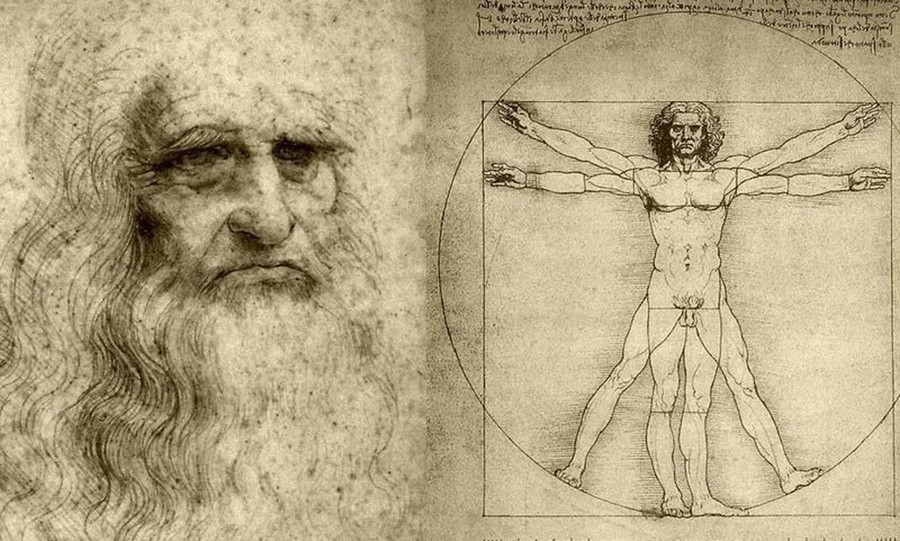The brooch contains religious and magical inscriptions in Latin and Hebrew.
This gold brooch dates back around 800 years and has a series of Latin and Hebrew inscriptions engraved on it (Image credit: Salisbury and South Wiltshire Museum)
A metal detectorist has discovered a medieval gold brooch with a series of Latin and Hebrew inscriptions. The artifact, found in Wiltshire in the U.K., may have mixed religion and magic in an attempt to give its user protection against illness or supernatural events.
The Latin inscriptions translate to "Hail Mary full of grace the lord/ is with thee/ blessed art thou amongst women/ and blessed is the fruit of thy womb. Amen." The Hebrew initials for "AGLA" are also inscribed on the brooch and represent Hebrew words that mean "Thou art mighty forever, O Lord."
The gold brooch dates to sometime between A.D. 1150 and 1400 and may have been used in an attempt to prevent fever, according to a brief report on the brooch published online by the Portable Antiquities Scheme (PAS) and written by Sophie Hawke, a finds liaison officer for PAS. In England and Wales, metal detectorists report their discoveries to the PAS, a government-sponsored organization that publishes reports and images of the finds on its website and sometimes in scholarly journals.
What was it used for?
Live Science talked with a number of scholars with expertise in medieval history and magic to get their thoughts on what the brooch might have been used for.
The Hebrew initials that represent the phrase "Thou art mighty forever, O Lord" may be important to the brooch's purpose, some of the scholars said. This phrase "figures prominently in medieval magic," Richard Kieckhefer, a professor of religious studies at Northwestern University, told Live Science in an email.
He noted that the other prayers engraved on the brooch were common religious prayers at the time. "What I would want to emphasize is that this sort of combination of 'religion' and 'magic' is not unusual," Kieckhefer said, noting that the mixture of religious and magical meanings would have given the brooch special powers in the eyes of the person who created it.
The Hebrew initials for "AGLA" were "very commonly used in magic, from high ritual magic to protective amulets and charms," Frank Klaassen, a history professor at the University of Saskatchewan, told Live Science in an email. "It is one of many divine names or words of power common in medieval traditions."
But why would someone wear such a brooch?
"Wearing Bible quotes like this was sometimes done as a way of protecting a person against misfortune," such as fire, sudden death or supernatural forces such as demons, Catherine Rider, a professor of medieval history at the University of Exeter in the U.K., wrote in an email. "It's hard to be sure that it's magical — it's perhaps more in a grey area between what we'd see as magic and religion."
Given the brooch's small size and mention of the Virgin Mary, the person wearing it may have been a woman. With its "small, though elegant, size, I would guess it was used on a woman's garments of some light fabric," Karen Jolly, a history professor at the University of Hawaii at Manoa, told Live Science in an email. "This woman was of sufficient means to have the object or have been given it. Whether she was literate or not, she would know what it said and what it meant," Jolly said, adding that perhaps the brooch served a protective purpose related to pregnancy and childbirth.
The brooch, with its tiny engraved inscriptions, was well crafted. "My main reaction to the brooch is that it was made by somebody who was highly skilled, and that its first owner, at least, was a pious person who recorded on it both devotion to the Virgin and a charm to protect them against various threats," Anne Lawrence-Mathers, a history professor at the University of Reading in the U.K., wrote in an email.
The brooch is now going through the Treasure Act, as required by British law. It's a process by which a determination is made as to what will happen to the artifact. It may end up being placed in a local museum depending on a number of factors. For instance, one possible outcome is that the metal detectorist may be given a monetary reward and the artifact may be handed over to the government, which could place it in a museum.
Originally published on Live Science.







